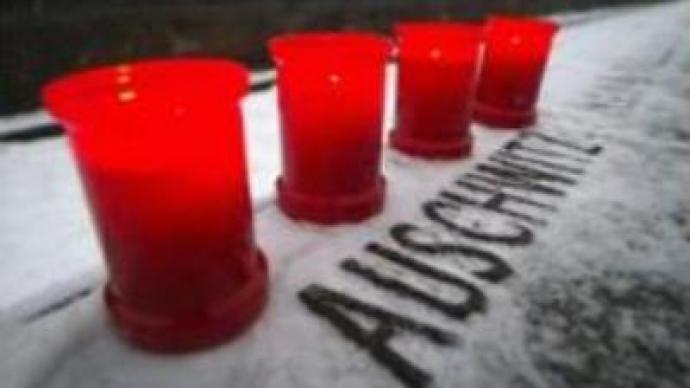Row over Auschwitz strains Russian-Polish relations

The Russian exhibition at the Auschwitz death camp has been shut for three years, and its reopening has been delayed because of disagreements over the nationality of some of the victims who died there.
A row over a memorial at the death camp is threatening to further strain relations between Russia and Poland.The Nazis’s largest concentration camp and Europe’s biggest graveyard is a symbol of terror and the Holocaust. 1,5 million Jews, Poles, Gypsies and Russians were slaughtered here. Even after sixty two years the camp still shocks its visitors. People come there to see, to learn and to understand what the victims were going through in the Nazi death machine. Currently, the Russian national exhibition is closed there.Three years ago it was meant to be updated. But the nationality of some of those who died in Auschwitz has become a major issue that needs to be solved in order for the exhibit to be reopened.The museum’s authorities say the exhibit can not be accepted in its present form. “The most serious doubt and problem to be solved is the terms used to name and identify people from the territories of the Baltic countries, Poland and Romania that were occupied by the Soviet Union as a result of the Molotov-Ribbentrop pact, because automatically they were given Soviet citizenship while, in fact, they considered themselves Polish or Romanian citizens, not Soviet,” believes Piotr Cywinski, Auschwits-Birkinau State Museum director.In 1939 Nazi Germany and the Soviet Union under Stalin signed a secret treaty – the Molotov-Ribentrop Pact. This led to the partition of Poland. Its Eastern part was incorporated into the Soviet Union. Its western half was occupied by Germany. The Soviet Union moved its borders further to the West. People living in those areas were given Soviet citizenship. After Germany attacked the Soviet Union in June 1941, thousands living in those territories – mostly Jews – were rounded up and sent to Nazi concentration camps. Among the victims were also 15,000 Soviet prisoners of war, slaughtered in Auschwitz.In 2005 Europe marked the 60th anniversary of the liberation of Auschwitz-Birkenau by the Soviet Army. The Russian exhibition was closed soon after that.Other countries have their own spaces in the former barracks of Auschwitz, reflecting the fate of their citizens at the hands on the Nazis. Their exhibits have also been renovated in recent years. But not a single one was closed.Dana Takoval, a Russian speaking tour guide at Aushwitz Birkenau, hopes the Russian and Polish sides will soon find a solution. “Russian speaking people come from Lithuania, Belorus and Ukraine and always ask us why the exhibit is closed. We tell them that it is temporarily closed. But people want to see it and learn things that they never heard about. We hope that it will be opened soon,” she stressed.The museum’s refusal to open the Russian display has sparked an angry reaction from Russia itself. In Moscow, the Foreign Ministry described the move as “more than bizarre”. It says Poland is delaying the reopening of the exhibition for political reasons.“From the historic point of view, the time when these territories were annexed from Poland was very short. And there are people still alive that express these sentiments in a very emotional way,” Vladimir Vsevolodov, professor of WWII history, said and then continued: “But if we look at the problem that we now see in Auschwitz and look at who the Poles that were in that camp were, then the answer was given a long time ago. These people were Soviet citizens of Polish decent and Jewish decent that used to live within the borders of the Polish State.” Poland disagrees. It says it was a deal between Russia and Germany and not between Poland and Russia. This is a fact, they say, that must be admitted.Some accuse Poland of trying to exploit the painful history of the World War II in order to whip up anti-Russian feeling.And until the dispute is resolved visitors will continue to wonder why the exhibition of the country that liberated Auschwitz and saved people, remains closed.
You can share this story on social media:












